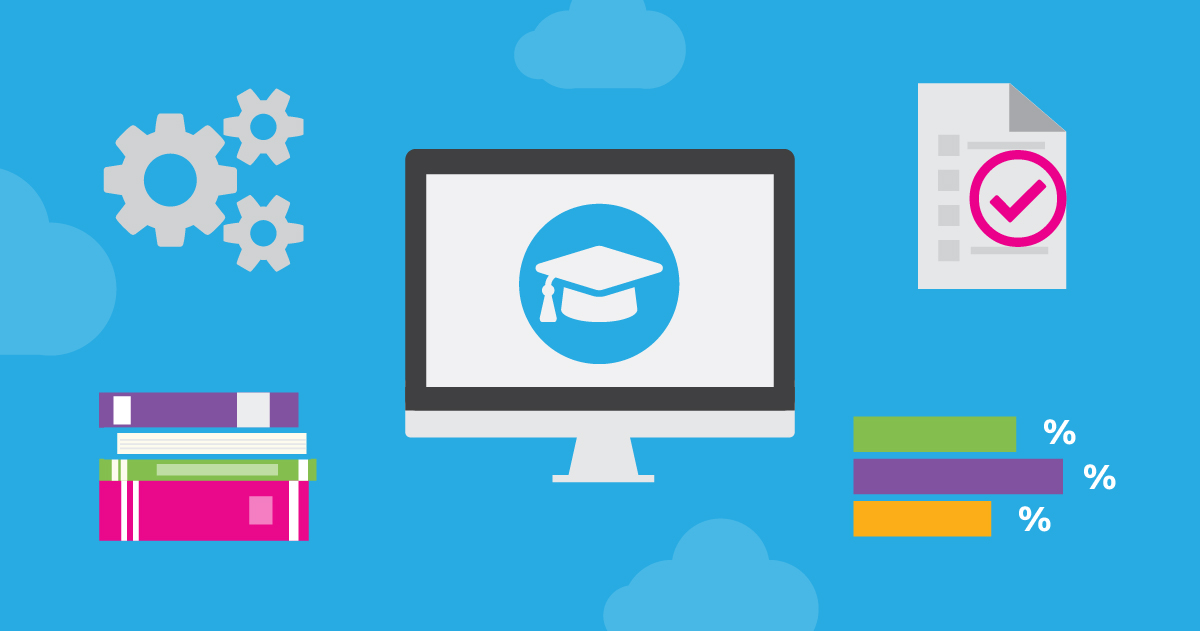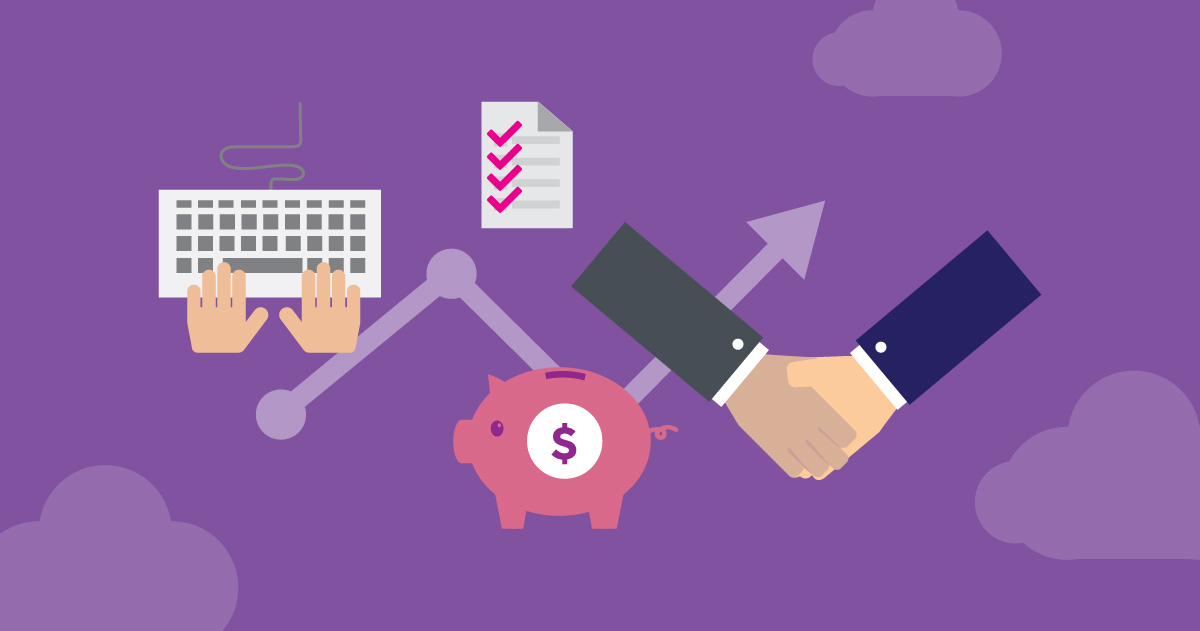By understanding and creating content for each stage of the buyer’s journey, you can offer leads a more personalized nurturing experience. In return, you’ll also gain a better understanding of who your lead is and how to successfully convert them into a happy customer.
96 percent of visitors who come to your website aren’t yet ready to make a purchase. That’s why generating eligible leads is a top priority—but businesses often face numerous challenges with this. Cultivating a quality lead generation strategy boils down to what content you’re promoting, where you’re promoting it and how effective it is at successfully converting prospects into customers.
Start by Attracting the Right Audience

Your lead generation efforts may not prove fruitful if you’re not reaching the right audience. This is where detailed buyer personas can be extremely useful. As you work on your sales enablement strategy, ask yourself these questions:
- Who is my target audience?
- Where is my target audience most active?
- What is a common problem my target audience faces?
- Why is my product or service their solution?
Your answers can help identify who your target audience is, then you can better adapt your strategy to reach that audience. Take a look at who is currently interacting with you on your social media channels or use Google Analytics to help define your target audience and set your lead generation strategy on the right path. By combining Google Analytics with your social media, you can:
- Learn which platforms gain the most traffic
- Track the ROI of your social media campaigns
- Discover insight into the demographics of your visitors
- Learn which content resonates the best with visitors
Narrowing in on the right prospects to engage with will ensure they will gain the most from your LMS, and your LMS will be equipped to handle the right audience.
Once you’ve established your target audience, there are still common issues to avoid if you want to see results from your lead generation efforts.
The Challenges of Lead Generation

Lead generation is not a simple or fast process—but it is integral for the success of your business’ overall marketing initiatives. Especially in the era of consistently changing buying processes, having a strong, adaptable lead generation strategy is imperative.
- Lack of Relatable Content: When making purchasing decisions, a prospect will go through the stages of the buyer’s journey, which we will discuss in detail later on. Brands should engage prospects with content tailored to each stage of this journey—but often don’t take the time to fully understand their audience’s needs.
- Inactive Leads: Engaging with prospects is an imperative step in nurturing those leads into educated and happy customers. Sometimes, though, a potential lead will stop responding to emails, unsubscribe or simply leave your webpage without making a purchase. Leads that cease engagement with a brand are a great challenge many marketers and sales reps face.
- Continued Rise of Ad Costs: You want to invest in the right lead generation strategies, including ad spending. With so many businesses and vendors active within the digital landscape, however, the cost of digital ads has increased, even surpassing television in terms of cost.
What can you do to supply your strategy with the fuel needed to achieve qualified leads? Consider turning to software built to help enhance your efforts.
Why Choose a Learning Management System

A learning management system (LMS) combined with your content strategy offers a dynamic way to nurture and monitor leads within a cultivated learning environment.
What sets an LMS apart in terms of lead generation, though?
Give Prospects a Personalized Experience
Understanding where the prospect is in the buyer’s journey can help your marketing and sales teams best engage the person on his or her level. You don’t want to push a sale on a prospect who is not yet ready to make a purchase. Consider each stage of the buyer’s journey and know when to invite prospects to access your LMS.
Awareness Stage
During the awareness stage, consumers realize they have a problem and need help solving it; this is where they will research their problem and possible solutions to it. This is not the time to promote your LMS. Instead, make consumers aware of your brand with helpful and informative content related to their problem like:
- Informative website articles
- Social media posts
- eBooks
Consideration Stage
Once your prospect has taken an action to learn more about your specific brand, utilize this opportunity to invite them to access your LMS. Within your LMS, you can provide examples of solutions, including your own products and services and what sets them apart. This can mean content like:
- Instructional documentation
- On-demand webinars
- Explanatory videos
Decision Stage
When they are ready to move on to a purchasing decision, prospects enter the decision stage. It’s during this stage that you should explain why you are the solution to their problem and tailor your content to be as personalized as possible. Within your LMS you can provide:
- ROI calculation tools
- Surveys
- Training videos on your products and services
When you personalize the buying experience, you’ll have carved the path that allows leads to reach a conclusion on their own. This not only helps your customer feel valued and understood, but it also establishes your business as a trusted solution to his or her problem.
Keep Leads Engaged and Avoid Message Fatigue
It’s easy to lose a potential lead before you even get the chance to engage with them. Instead of trying to follow leads through public platforms like a social media channel or website, you can invite prospects to access your LMS. If a prospect chooses to accept your invite, you can create a customizable link with roles-based permissions and assign leads a role based on whichever stage of the buyer’s journey they’re in. This helps drive them directly to the learning content best suited for them. Plus, an LMS that offers intuitive metrics tracking allows you to see what content resonates with your prospects and what doesn’t—a worthwhile feature for any lead generation effort.
Additionally, prospects can experience message fatigue—seeing the same messaging repeatedly to the point of exhaustion. Guiding them through a carefully tailored LMS offers leads the information best suited for their needs while allowing them to learn at their own pace.
Invest in Value
Allocating budget to a lead generation strategy only to acquire inadequate leads can put a strain on your company. With the cost of digital ads on the rise, investing in a cost-effective solution to further your lead generation efforts is advantageous.
An LMS encompasses a variety of capabilities, including customer education, employee training, lead generation and metrics tracking. Investing in these unique features means investing in the proper training and support needed to advance your business development efforts.
Reaching Your Lead Generation Goals

Enlisting the help of an LMS to reach your goal of acquiring more leads is just the beginning. You then have to integrate your software into your marketing strategy.
Be an Expert in Your Industry
Recruiting a team to supplement relevant and helpful learning content can supply leads with the information they need to move throughout the sales funnel. Whether you have a designated content creation team or choose to hire an agency, continuous efforts to create valuable, timely content will keep your brand ahead of the competition.
Luckily, an LMS is capable of distributing content such as:
- Marketing literature
- Whitepapers
- Explainer videos
- Introductory videos
Show your audience you are a specialist in your industry, and they will return to you in the future.
Ensure Your Sales Team is Fully Trained
Companies that have a dedicated sales enablement function have seen an improvement in their sales training effectiveness by 29 percent. As you implement an LMS into your lead generation strategy, ensure your sales team is also trained on the software. They need to know where and how prospects are learning about your brand in order to be successful at selling your solution.
With dedicated eLearning modules, you can empower your sales team with the latest information they need to interact with qualified leads by:
- Developing their sales skills to better serve prospects and customers
- Enhancing communication efforts with the ability to connect with the marketing team, other sales reps or prospects themselves
- Providing immediate access to information needed to make a sale
- Individualizing training support on what they would like to learn or improve upon
- Offering continuously updated training on your products and services
An LMS also allows you to monitor sales reps’ training progress and conduct performance assessments to ensure your team remains on top of their game.
Marketers and sales reps are stronger when they work together, and this includes creating more qualified leads. By aligning your communication efforts, you can streamline lead generation strategies to focus solely on creating qualified leads without losing time, energy and resources on bad leads.
Engage with Leads Even After the Sale
You’ve finally turned a prospect into a satisfied customer—but the relationship shouldn’t end there. You should establish a sense of support for your customers through excellent customer service.
Consider these six ways to successfully follow up with your customers after a sale:
- Send a simple thank you message, showing your appreciation for their business
- Provide guides on how to use your products and services
- Update customers on new features that may be relevant to their purchase
- Offer buyers an opportunity to ask you questions
- Showcase other useful products that may interest your customer
- Provide an article or blog post from your business that relates to the product or service purchased
When you follow up with a customer, you’re helping create a long-term promoter of your business while ensuring a positive sales transaction. If that customer needs assistance in the future, they will trust your business as a solution. This also shows your customer that they are not just another number to you and that you truly care about their needs.
By centralizing your marketing and sales efforts around an intuitive LMS, you can find success in your lead generation strategy. You’re able to follow customers throughout the buyer’s journey and beyond the point of purchase and ensure all of your team members are on the same page throughout the lead generation process.
Start Generating Qualified Leads with Konvert™

Customer education has become an imperative asset in generating qualified leads. That’s why it’s important you take the time to properly equip prospects with the information needed to make a purchasing decision.
The Konvert™ LMS offers a dynamic way to monitor, engage and convert leads into qualified, educated customers. Konvert allows you to guide your customers through the buyer’s journey and equip them with the information they need to make a purchasing decision.
Contact us today to kickstart your lead generation strategy.